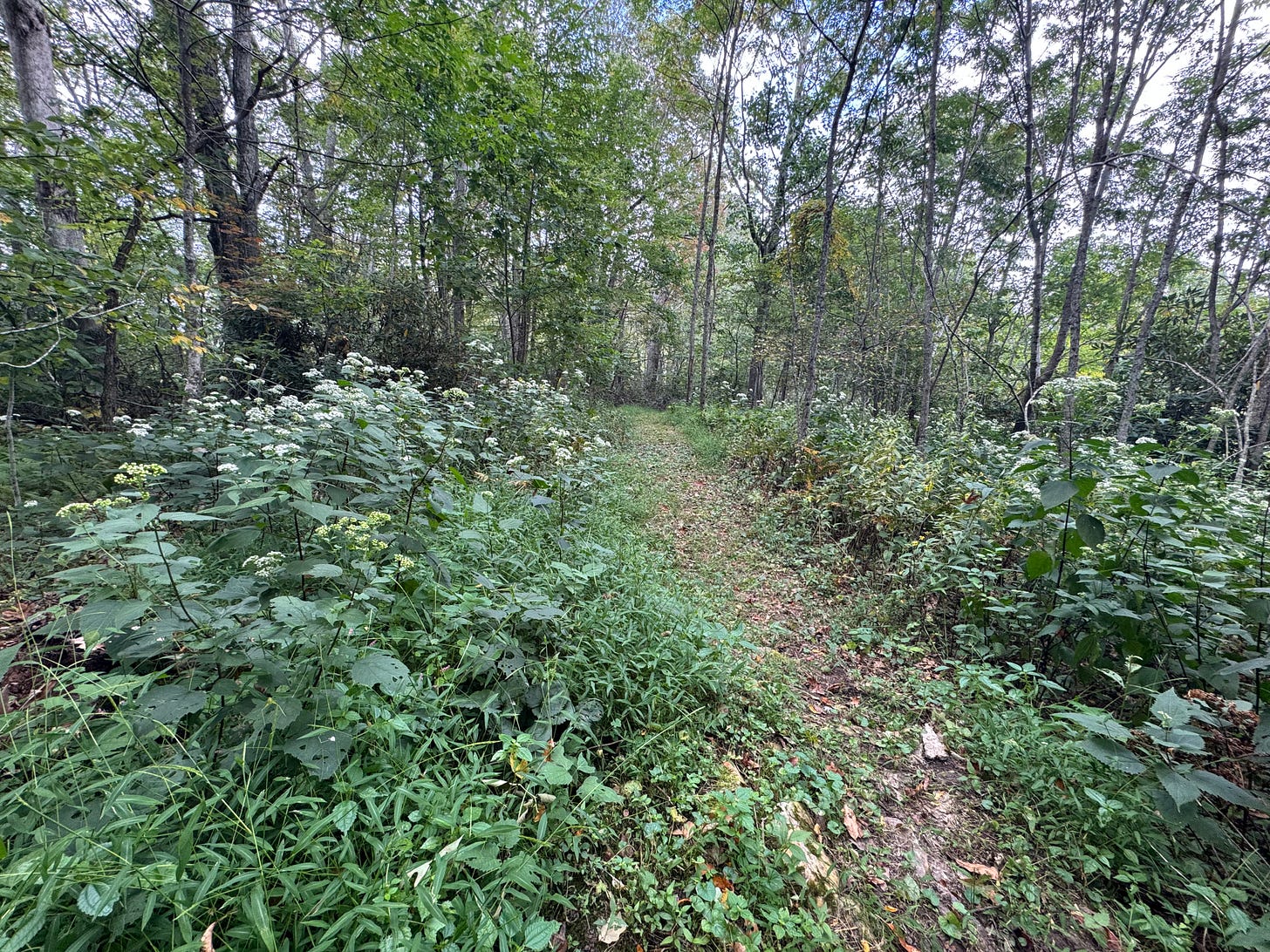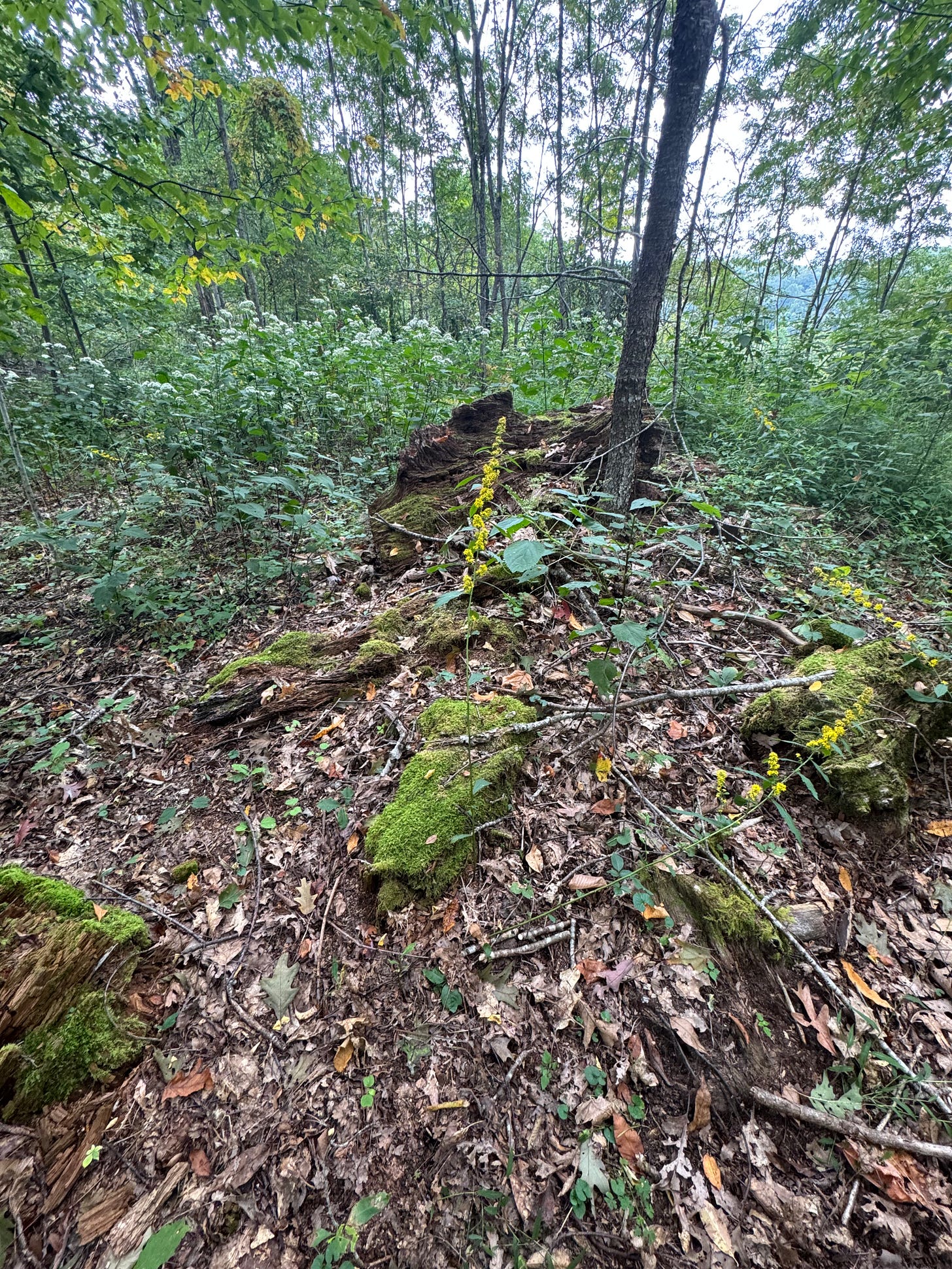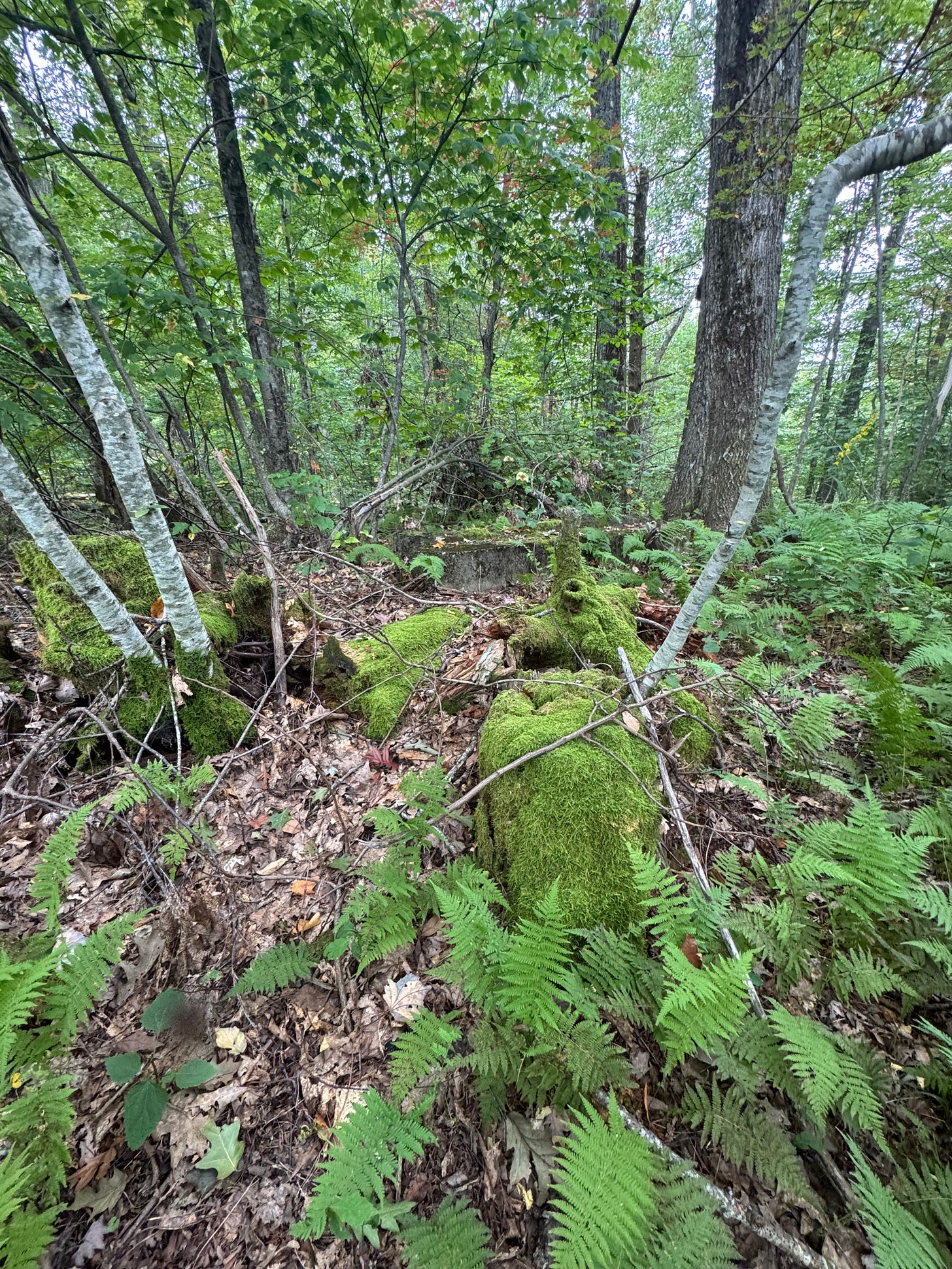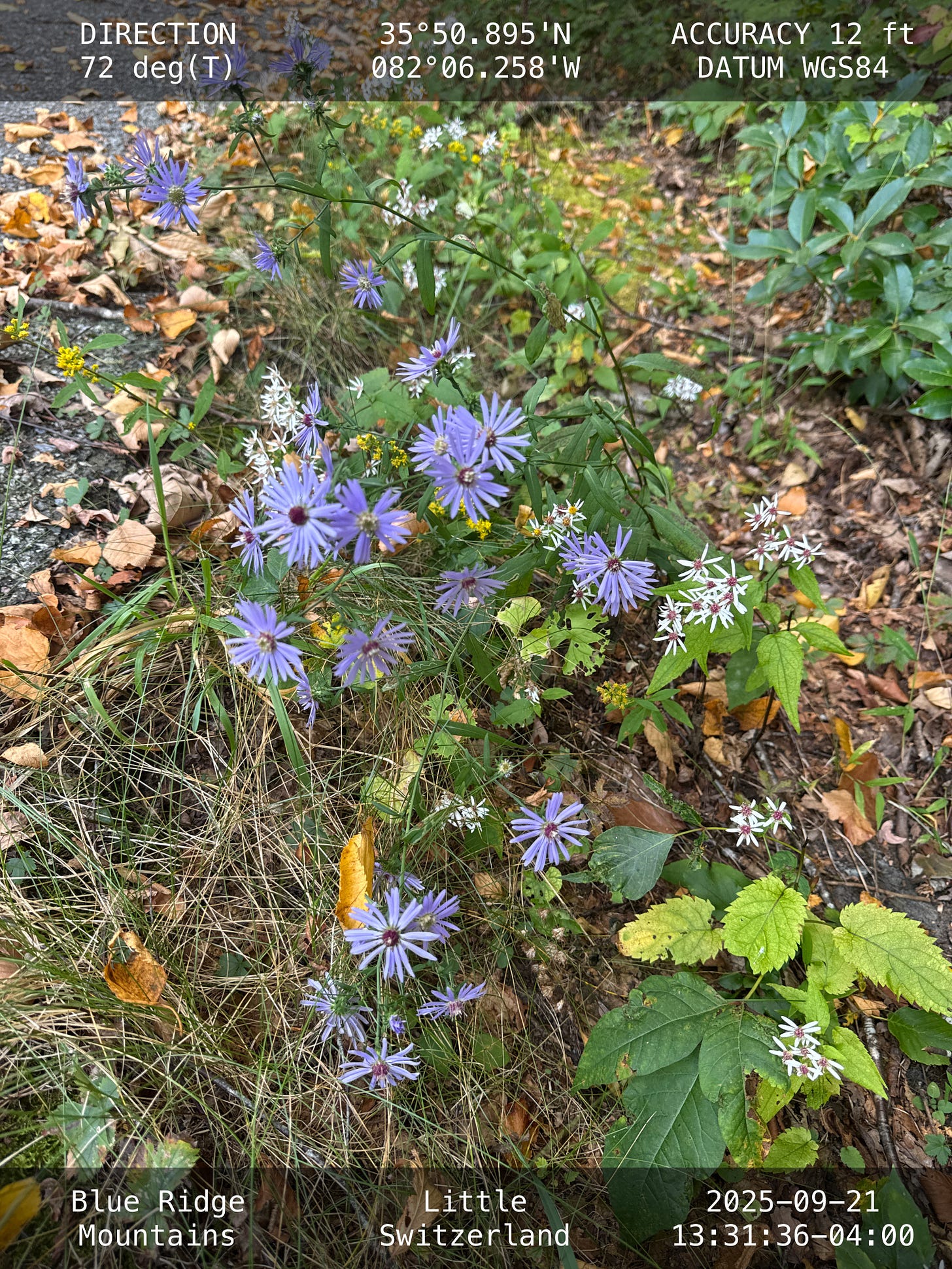Today I walked in the woods. Not terribly far, but far enough. The trail was lined with wildflowers, the bees were a-buzz. Yellow Swallowtail Butterflies floated in the late summer breeze. It was glorious.
There’s a late summer wildflower known in the North Carolina mountains. It blooms late summer into early fall. Flat-topped clusters of tiny flowers. White as snow. Everywhere. I was told that it is called Boneset. By someone whom I thought knew. Thought that for years. I assumed the person who told me was some sort of authority. It was so long ago I can’t remember her name. Somebody.
Today as I walked through the woods those flowers were putting on a show. Hundreds. Thousands. Maybe millions. The path was lined. They blanketed the slopes and valleys. White as snow. Boneset.
Boy, was I wrong. Curiosity took me back to my wildflower books. I like to read about plants. Properties. Habitat. Medicinal uses. Bonset, Eupatorium perfoliatum, is a native North American perennial wildflower known for its distinctive perfoliate leaves. Wait a minute. These leaves are not perfoliate. That means that the stem appears to pass through the leaf bases. These leaves were nothing of the kind.
A little more reading led me to another plant, a Boneset look-alike. Snakeroot, Ageratina rugosum, is a beautiful wildflower even though it is toxic to mammals. Stupid me. I was planning on brewing up a tonic of Boneset to use next time I had a fever.
Further reading took me to an article about the perils of Snakeroot. During the nineteenth century when cow’s milk was not controlled, many people died from milk fever. That particular ailment was spread by drinking milk from cows that had eaten the Snakeroot flowers. One famous death from milk fever was Abraham Lincoln’s mother. Who knew?
Today I learned quite a few things. First I learned the proper name of a beautiful flower I adore. Secondly, I learned its proper Latin name. I learned its characteristics and a bit more about the plant. For the most part I learned something about myself.
First, never assume that someone who tells you something is in fact an authority. Do your own research. Also don’t just look at the flowers, look at the stem and leaves. Understand all parts of the plant. Finally, trust your own research gleaned from both direct observation and studying primary source information. Trust credentialed authorities. It could easily save your life.
Lately I find myself falling prey to misinformation. I read something somebody posted on the internet and I assume it is a fact. Now with AI generated images things can easily deceive my old eyes. I am duped into thinking something is one way or the other simply because “somebody says.” Again, the woods taught me a valuable lesson I can take to the bank. Don’t trust everything your hear. Don’t assume. Watch, listen, read and study. Go to primary source. Look at all parts. Before brewing up a tonic to heal what ails you, be confident in the facts.
Get into the woods. Take a walk. Look and listen. Watch and learn. Surround yourself with information from leading authorities on any subject. Read what they say but check their sources.
On a lighter note I wrote this little piece.
Thoughts on a moss-covered log in the woods.
There is a joy in finding a moss-covered log in the woods. Or a stump. Or a rock.
A soft green spot for my mind to rest. And smell the sweet musk of late summer.
Flowers and leaves as they decide to end and turn.
There, my eyes eat constellations of Asters and flashes of goldenrod.
Scattered in a fern-green sky.






It’s so true that it’s getting harder to know what’s factual and what is someone else’s propaganda. And lay off the snakeroot.
Surely am relieved you did not brew up some snakeroot tea.